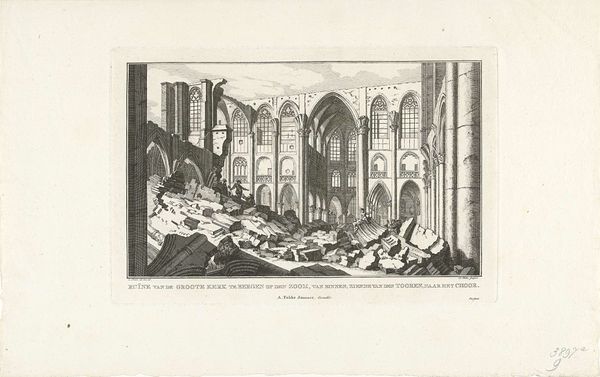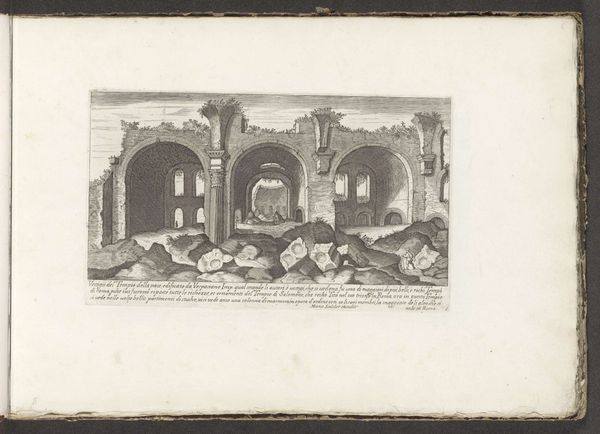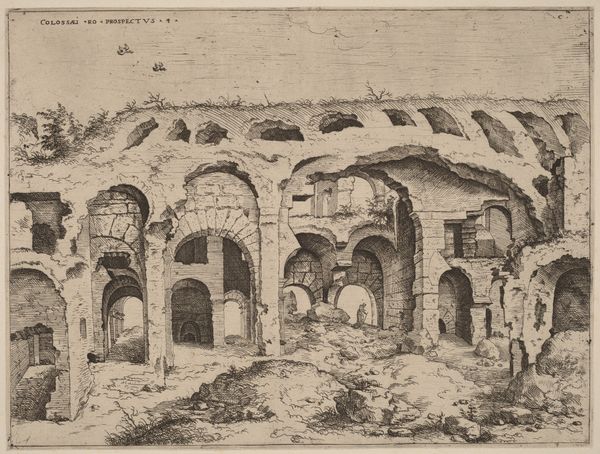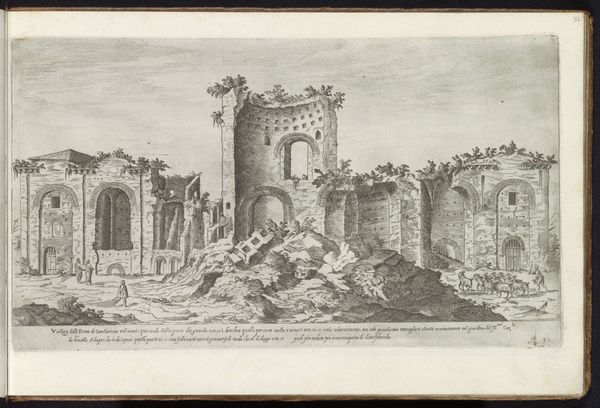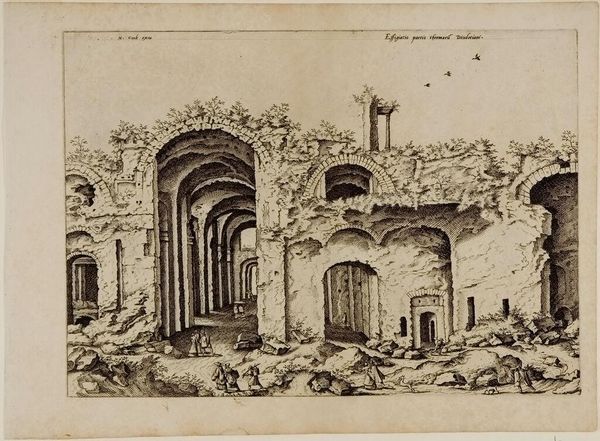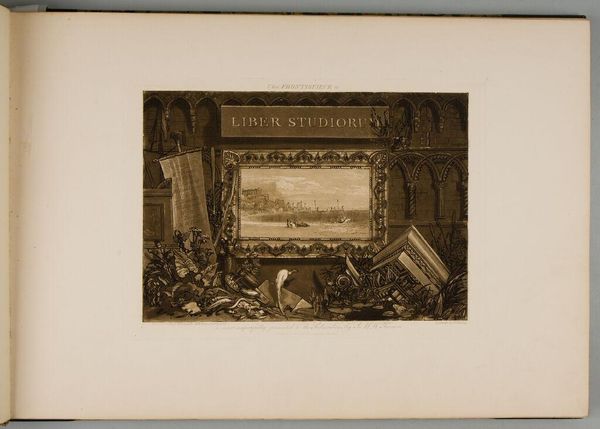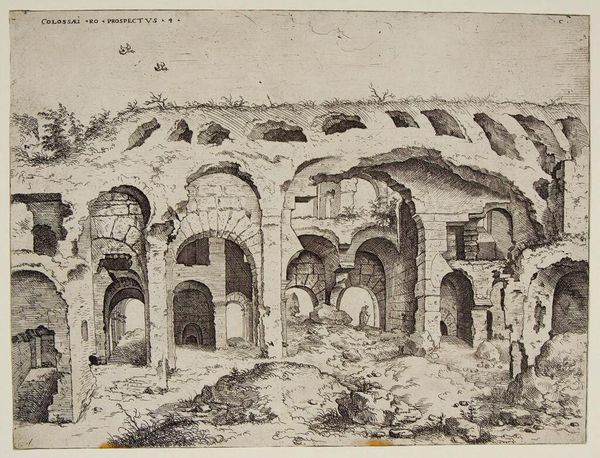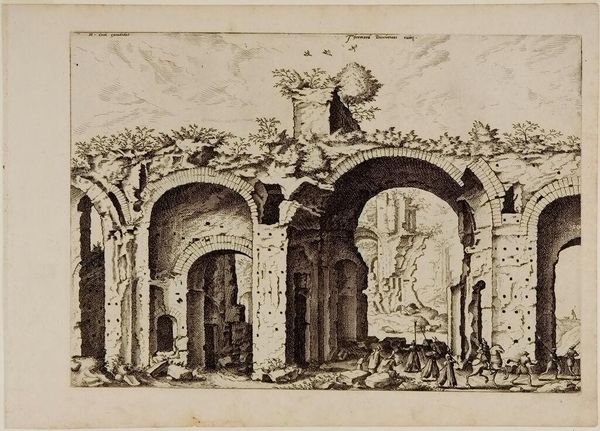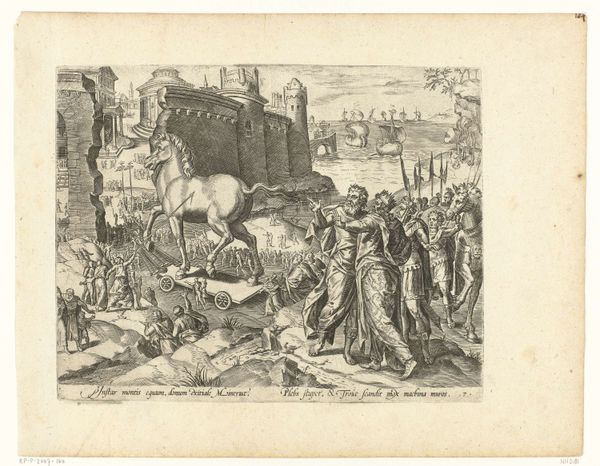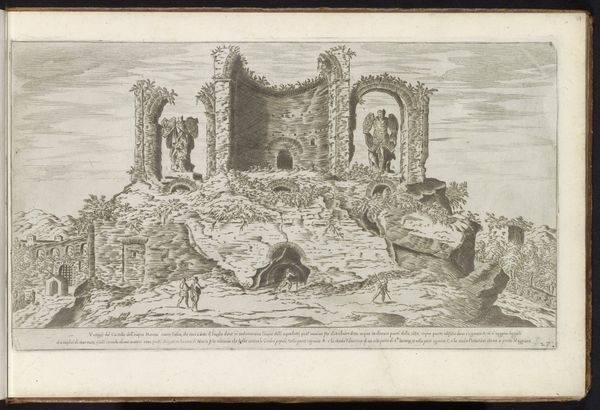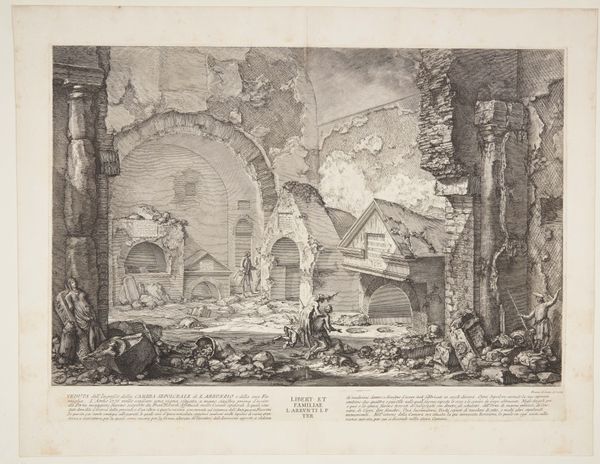
print, engraving, architecture
# print
#
old engraving style
#
landscape
#
ancient-mediterranean
#
engraving
#
architecture
Dimensions: height 215 mm, width 381 mm
Copyright: Rijks Museum: Open Domain
Curator: Today we’re looking at a 1575 engraving by Étienne Dupérac entitled, “Resten van de Basilica van Maxentius te Rome,” housed here at the Rijksmuseum. Editor: My immediate impression is one of solemnity and decay. The sheer scale, even in two dimensions, conveys the overwhelming power of nature reclaiming man's creation. Curator: Indeed. Dupérac's skill with line weight and cross-hatching constructs a compelling image. Note the arches; each curve is rendered precisely, contributing to a sense of architectural grandeur, now ruined. The foreground, chaotic with fallen debris, sharply contrasts with the ordered arcades. It's a compelling study in pictorial balance. Editor: Precisely, balance but also labor. Consider the actual processes. Dupérac painstakingly etching copper to create these delicate, uniform lines to make art affordable to larger society in printed form. Each mark represents skilled labour—hours spent replicating an image of Rome’s lost glory. What did the artisan, printer, publisher each contribute in skill and thought? What of its wide accessibility to viewers. It speaks to a changing economy for visual knowledge. Curator: Your points concerning labor are crucial, grounding the piece in its material conditions. Further considering form, observe the calculated contrast between light and dark which provides stark realism. Dupérac employs a precise method, achieving remarkable texture and form, giving viewers the ability to "see" this monumental ancient architecture as they may never be able to in person. The detail, almost photorealistic, underscores not just documentation but also the engraving medium itself. Editor: A significant element of course is considering what "architecture" itself means. So here we observe architecture repurposed into aggregate through destruction—these ornate stone fragments are strewn on the landscape for another maker's utilization and interpretation, becoming mere physical matter. The ruins, presented as a field, also make us reconsider ideas such as material reuse or entropy, each connected to the material composition of the planet. Curator: True, seeing both physical structure but symbolic material as well reveals profound depth beyond straightforward architectural rendition. A discussion of architectural history becomes an investigation into permanence, medium and artifice. Editor: I concur. The artwork has certainly provided compelling insights into antiquity, manual labour and contemporary significance for materiality.
Comments
No comments
Be the first to comment and join the conversation on the ultimate creative platform.
